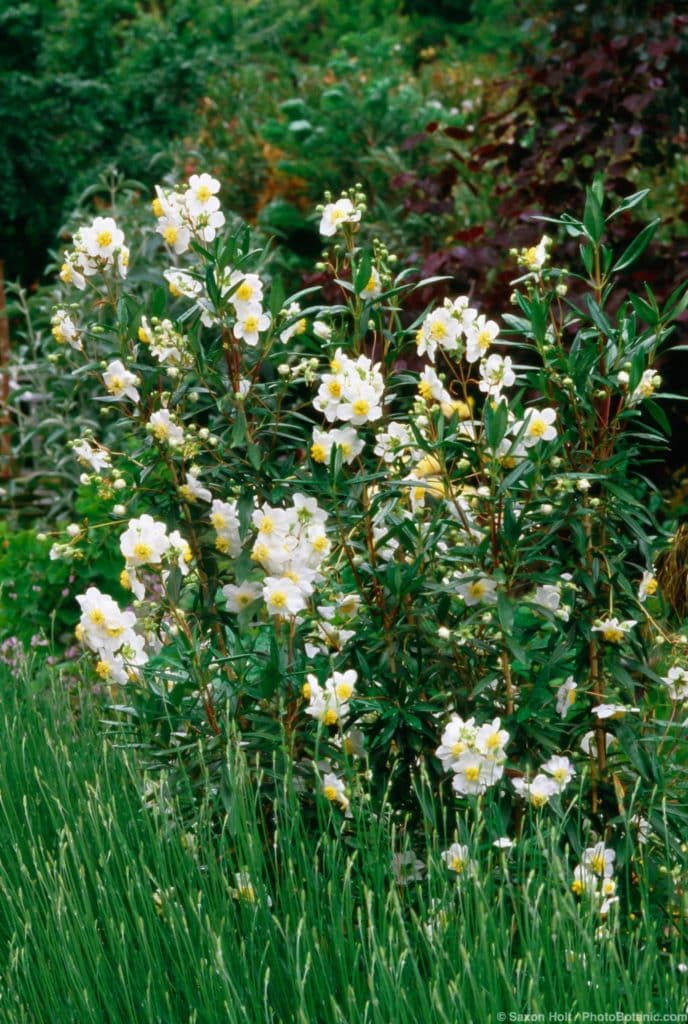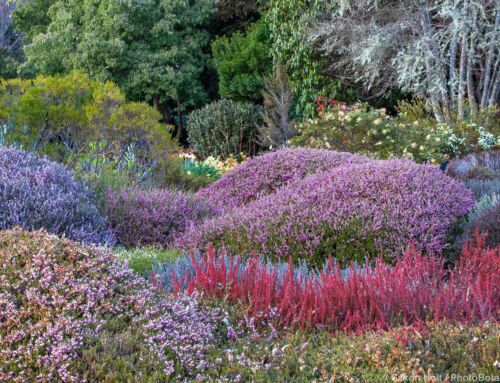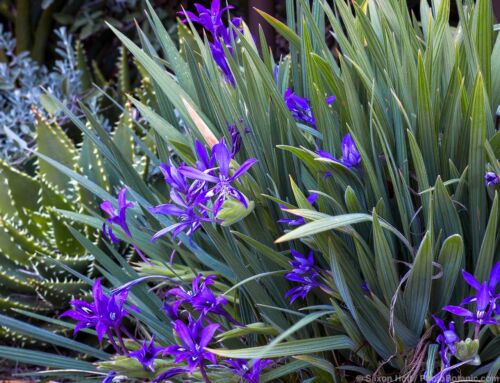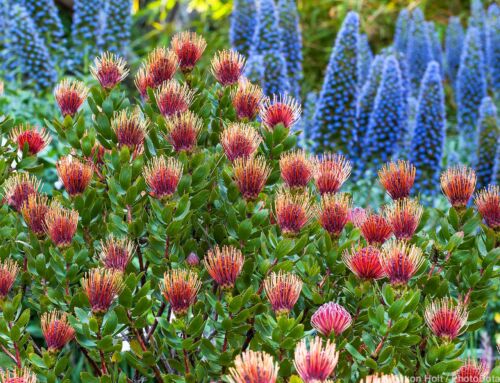
Carpenteria californica
Gardeners who relish a bit of a challenge and delight in a smashing success probably already grow California’s native bush anemone (Carpenteria californica).This is a connoisseur’s plant, elegant and refined virtually year round and seasonally extravagant in its flowering. Where it is happy — and there’s the catch — it is surprisingly easy to grow.
This splendid multi-stemmed shrub is grown mostly for its impressive early to midsummer display of large, glistening white, lightly fragrant, simple but showy flowers with bright yellow stamens.
Carpenteria is evergreen, with long, narrow, somewhat leathery, dark green leaves that are grayish white on the undersides. New stems are dark red or purplish, shredding with age to reveal tan-colored bark beneath. Upright and generally taller than wide, carpenteria can be kept to six feet tall and four feet wide with annual post-bloom pinching back. Left on its own, it eventually will grow larger and may become open and rangy.
Carpenteria accepts full sun along the coast, but prefers high shade or afternoon shade inland. It will grow in full shade, but may have fewer or smaller flowers. Tolerant of some dryness once established, it looks best with occasional to moderate deep watering in summer.
As with most California natives, it is best to plant carpenteria in the fall. If your soil is heavy clay, plant on a mound or a slope for good drainage. For at least the first year, water deeply twice a month — more in hot interior locations. Gradually cut back on watering as the plant becomes established.
Do not be alarmed if leaves droop, curl under, or turn yellow in the hottest weeks of the year. This is a natural response to heat and drought. Mulch, water deeply to moisten but not drench the soil, tip prune, and wait for the plant to respond to the cooling days of fall.





Leave A Comment